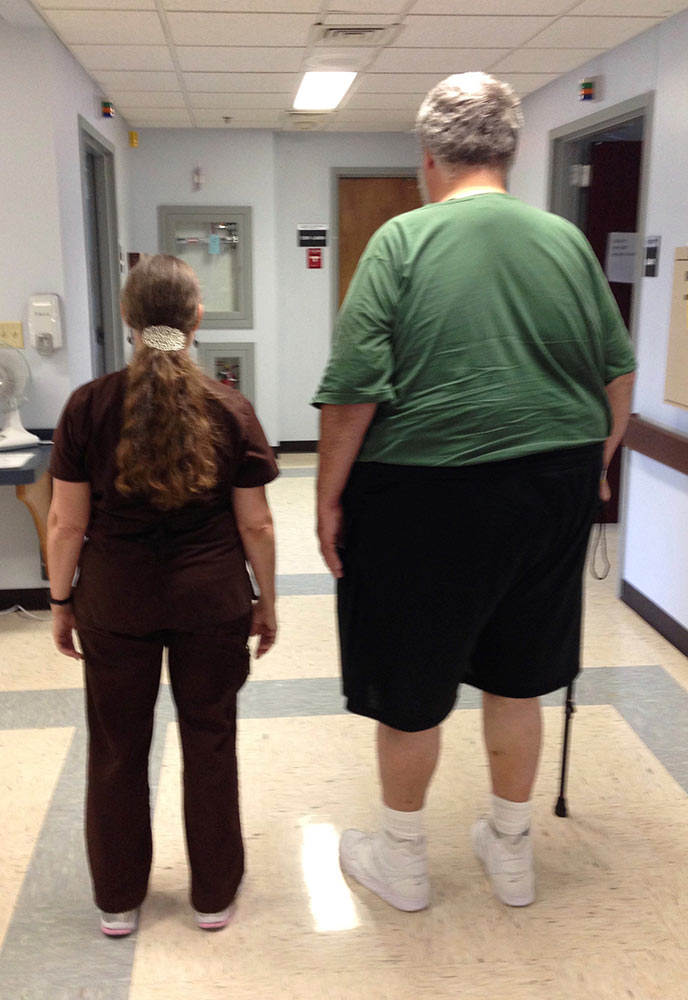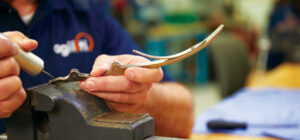Objective
Healthcare workers have among the highest on-the-job injury rates, according to the U.S. Centers for Disease Control and Prevention. Accreditation and reimbursement pressures are encouraging healthcare facilities to focus on safe, effective care of the highest quality. This report outlines an inpatient rehabilitation program for a person with obesity and post-operative hemiparesis—while maintaining the highest levels of safe patient handling.
Methods
A 42-year-old male with BMI of 65.2 presented with flaccid left upper and lower extremities following a surgical resection of a glioma that was causing complex partial seizures. This summary outlines the interprofessional collaboration of hospital staff and equipment vendors for his care from intensive care to inpatient rehabilitation to discharge home. Patient evaluation and interventions included safe patient handling techniques and appropriate equipment.1,2,3
Interventions
Neuro ICU (4 days)
- Active right-sided exercise, passive and assisted left-sided exercises
- Assisted rolling and sitting edge of bed
- Dependent transfers out of bed to chair using mechanical lifts
Step-Down Unit (9 days)
- Progression of ICU interventions to facilitate more patient participation in movements and activities
Inpatient Rehab Unit (26 days)
- Supine and seated assist, progressing to active then resistive left-sided exercises
- Sit to and from supine, lateral scooting, sliding board transfers
- Sit to stand from elevated mat with bariatric walker
- Static and dynamic standing balance activities
- Gait with roller walker and wheelchair follow
- Progression of walking to cane
- Step up on 4’ curb in parallel bars progressing to 6” steps with rail

(Photo used with permission).
Results/Outcomes
Patient’s level prior to surgery was independent in all mobility and working full time. After surgery he was dependent in functional mobility. Mechanical lifts and bariatric seating systems were utilized as out-of-bed mobility started in the ICU. Specialized equipment was used for supine lateral transfers, upright standing transfers, seated mobility, and ambulation training.
Initial and discharge function was documented with outcome measures. Functional Index Measure mobility score improved 17 points. KUH sitting and standing balance improved 8 points. KUH Physical Therapy Acute Care Functional Outcomes improved 22 points.4,5
Conclusion
Patient progressed from dependent, using mechanical lifts and specialized bariatric equipment with assistance of 2-4 staff members to independent and safe walking with a cane on level surfaces and stairs. Extensive planning and procurement of appropriate equipment helped the patient progress in a safe and effective manner and no employees were injured providing care for this complex patient.

